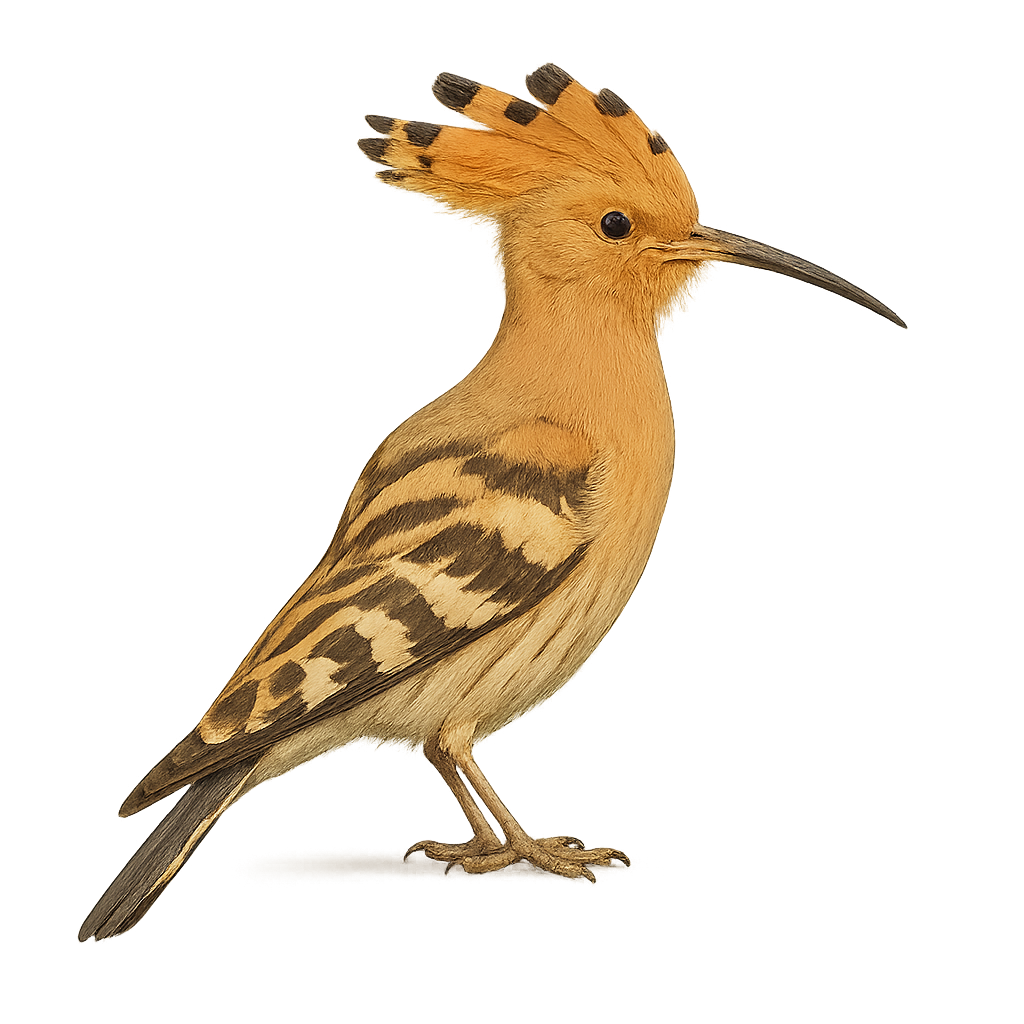Your wildlife photography guide.
Explore the hoopoe in detail, study its behavior, prepare your shots.
Where to observe and photograph the hoopoe in the wild
Learn where and when to spot the hoopoe in the wild, how to identify the species based on distinctive features, and what natural environments it inhabits. The WildlifePhotographer app offers tailored photography tips that reflect the hoopoe’s behavior, helping you capture better wildlife images. Explore the full species profile for key information including description, habitat, active periods, and approach techniques.
Hoopoe
Scientific name: Upupa epops

IUCN Status: Least Concern
Family: UPUPIDAE
Group: Birds
Sensitivity to human approach: Suspicious
Minimum approach distance: 30 m
Courtship display: April to May
Incubation: 15–18 jours
Hatchings: May to June
Habitat:
Open areas and sparse forests
Activity period :
Primarily active during the day, with peak activity in the morning and late afternoon.
Identification and description:
The Eurasian Hoopoe is a bird with a spectacular plumage, easily recognizable by its colorful crest of feathers that it raises in the shape of a tuft on its head. It measures about 25 to 29 cm in length, with a wingspan of 44 to 48 cm, and weighs between 40 and 70 g. Its plumage is primarily light beige, with black and white stripes on the back and wings, and its beak is long, thin, and slightly curved, ideal for probing the ground in search of insects and other small prey. The Eurasian Hoopoe primarily inhabits open areas, such as grasslands, orchards, forest edges, and cultivated areas across Europe, Asia, and North Africa. It mainly feeds on insects, such as ants, termites, and larvae, which it catches by probing the ground. This bird is an excellent flier, capable of flying long distances with powerful wingbeats. Although the species is not endangered, it is vulnerable to habitat loss and the intensification of agriculture.
Recommended lens:
300 mm – adjust based on distance, desired framing (portrait or habitat), and approach conditions.
Photography tips:
Use a telephoto lens to photograph from a distance, respecting the species' discreet nature.
Photograph early in the morning or late in the afternoon, when soft light highlights the colorful plumage of the hoopoe.
Look for it in various open habitats, such as bare grounds with short grass, hedgerows, meadows, crops, partially wooded open areas, as well as gardens, parks, and orchards.
Be patient and discreet to avoid disturbing its natural behavior. Avoid sudden movements and keep quiet.
Always respect its natural environment and minimize disturbances, especially during the breeding season.
The WildlifePhotographer App is coming soon!
Be the first to explore the best nature spots, track rutting seasons, log your observations, and observe more wildlife.
Already 1 432 wildlife lovers subscribed worldwide

